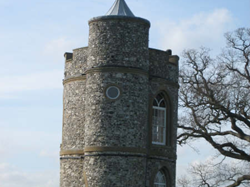The Cradle of Cricket?
When you think of the history of cricket you tend to think of Lords but the pitch at Belmont House in Throwley has an important place in the games origins.
The Honourable George Harris was born in Trinidad in 1851 where his father was serving as the governor, later the family moved to Madras in India.
George Harris was coached when as a boy he visited Lords with his private tutor, later he was sent to Eton to complete his education. He secured a place in the Eton eleven in 1862 and later at Oxford University he gained a blue. He was a noted batsman and fielder and had a long association with Kent Cricket Club where he played for over 40 years, captaining the side for a number of years in the late 1800’s.
Lord Harris as he was by then was the second captain of the newly formed English team. In 1878 he led a touring side to Australia. They had little success losing the test match in Melbourne and having mixed success in the other tour matches. There was also a serious disturbance at the match with New South Wales after a dubious umpiring decision. Lord Harris later led England against Australia on three further occasions with two wins and a draw. He last played at Lords when he was 78 playing for the MCC against an Indian side.
Apart from his cricket career Lord Harris served as a minister in the House of Lords and was appointed as Governor of Bombay. While in India he played an important part in the development of cricket there.
Lord Harris died at Belmont in Throwley in 1932.There is a memorial stone in the Harris Garden at Lords Cricket ground. Lord Harris played cricket at Belmont often as the chief, as he was known, of his Band of Brothers Team. On the first day of Canterbury Cricket Week the current chief of The Band of Brothers lays a wreath in memory of Lord Harris in the Memorial Gardens in the Precinct of Canterbury Cathedral. Recently the cricket pitch at Belmont was restored with the first match played by a modern Band of Brothers on the restored pitch in 2007. Matches can still be seen the Belmont website gives a list of fixtures.
References:
1) Belmont House website http://www.belmont-house.org/cricket/
2) cricinfo website http://www.espncricinfo.com/england/content/player/14077.html
3) Wikipedia entry for George Harris, 4th Baron Harris http://en.wikipedia.org/wiki/Lord_Harris
Photographs courtesy of Anna Zeville

